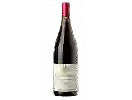
Winery Marcel MartinS. de La Sablette Sauvignon Blanc
This wine generally goes well with vegetarian, rich fish (salmon, tuna etc) or shellfish.
Wine flavors and olphactive analysis
On the nose the S. de La Sablette Sauvignon Blanc of Winery Marcel Martin in the region of Loire Valley often reveals types of flavors of citrus, minerality or black currant and sometimes also flavors of lemon, earth or citrus fruit.
Food and wine pairings with S. de La Sablette Sauvignon Blanc
Pairings that work perfectly with S. de La Sablette Sauvignon Blanc
Original food and wine pairings with S. de La Sablette Sauvignon Blanc
The S. de La Sablette Sauvignon Blanc of Winery Marcel Martin matches generally quite well with dishes of rich fish (salmon, tuna etc), shellfish or vegetarian such as recipes of wild salmon with verbena steam, penne with shrimp and zucchini or mushroom, bacon and gruyere quiche.
Details and technical informations about Winery Marcel Martin's S. de La Sablette Sauvignon Blanc.
Discover the grape variety: Bobal
This grape variety is widely cultivated in Spain under the name béni carlo. It was introduced into the Languedoc-Roussillon region of Narbonne around 1870.
Last vintages of this wine
The best vintages of S. de La Sablette Sauvignon Blanc from Winery Marcel Martin are 2017, 2019, 2016, 2015 and 2018.
Informations about the Winery Marcel Martin
The Winery Marcel Martin is one of of the world's greatest estates. It offers 58 wines for sale in the of Loire Valley to come and discover on site or to buy online.
The wine region of Loire Valley
The Loire Valley is a key wine region in western France. It follows the course of the Loire River on its Long journey through the heart of France, from the inland hills of the Auvergne to the plains of the French Atlantic coast near Nantes (Muscadet country). Important in terms of quantity and quality, the region produces large quantities (about 4 million h/l each year) of everyday wines, as well as some of France's greatest wines. Diversity is another of the region's major assets; the styles of wine produced here range from the light, tangy Muscadet to the Sweet, honeyed Bonnezeaux, the Sparkling whites of Vouvray and the juicy, Tannic reds of Chinon and Saumur.
The word of the wine: Faded
Said of a wine that has lost its brilliance and depth. It can also be used to describe the nose of an old wine that has lost its aromatic freshness.














